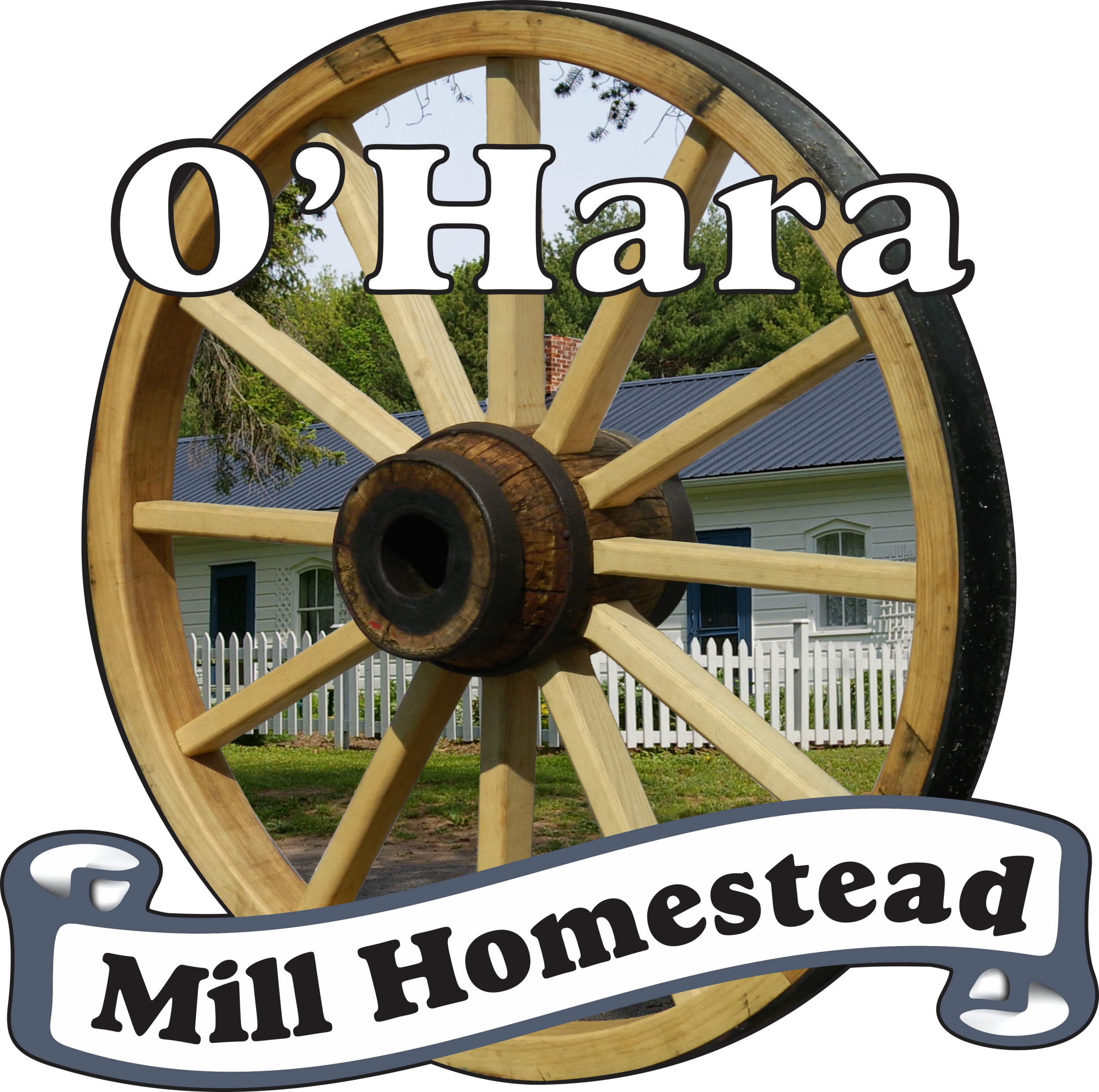Spinning and Weaving: "Iloominating" the Process
Textiles/ July 8th, 2021
Today we are going to be looking at how wool and other materials were made into yarn and cloth that could be used to make whatever your heart desires! Learning how to use a spinning wheel, and in some cases a loom, was essential for early settlers facing harsh winters in Canada. These skills would help keep the family warm and clothed all year round!
The Spinning Wheel
Spinning Wheel in the Log Cabin
One of the first steps in textile processes is making wool and other materials into yarn or thread. This is done on a spinning wheel!
The spinning wheel consists of many moving parts that are all needed to reach the desired end result of turning fibres into thread. The “Mother of All” refers to an entire section of the spinning wheel. It holds the “Maidens”, the “Flyer”, the “Bobbin” and the “Orifice”. The “Flyer” has hooks that direct the yarn onto the “Bobbin” and the tread gets pulled by the wheel through the “Orifice” and then is spun on the “Flyer” and onto the “Bobbin”.
At the wheel end of the spinning wheel there is the “drive wheel”, which moves the “Flyer”. The “drive wheel” is connected to the foot peddle by what is called a “Footman”, which moves the wheel as you push on the foot peddle.
To see how it works check out our demonstration video from last summer with volunteer Doris! https://www.youtube.com/watch?v=jXiA1XdmJ28
The Loom
The Loom in the O’Hara Log Cabin Attic
Many visitors ask us what is in the off limits attic of the Log Cabin here at O’Hara. The answer is a very large loom! Donated to the Homestead, this loom is not in operation at the moment but we would love to one day be able to show visitors how it works! The next best thing is to tell you a little bit about what a loom is and why it was used!
Looms have been around for a very long time, in fact according to the Encyclopedia Britannica, they have been around since around the 5th century BC! Thats a very long time! After yarn and thread is made on the spinning wheel the next step in the textile process is turning it into a fabric on the loom!
The basic Loom consists “of bars or beams fixed in place to form a frame to hold a number of parallel threads in two sets, alternating with each other. By raising one set of these threads, which together formed the warp, it was possible to run a cross thread, a weft, or filling, between them. The block of wood used to carry the filling strand through the warp was called the shuttle.”
Inventions over time such as the heddle in the Medieval Period, and the drawloom allowed for more intricate designs to be weaved on the loom! The flying shuttle and power drive invented during the Industrial Revolution mechanized the loom, allowing for large production increase and shorter time needed as well as less manpower to operate the loom. It played a central role in the textile industry during the industrial revolution.
A set up loom similar to the O’Hara one
The loom was essential for making cloth that would turn into clothing, blankets, and other textiles. Unlike yarn, the loom produced a much more delicate and tightly woven material that would be used in more fashionable endeavours and would often be more durable, especially when made on a mechanized loom!
We hope now you know just a little bit more about the textile industry! Follow along the rest of this week to learn more!



